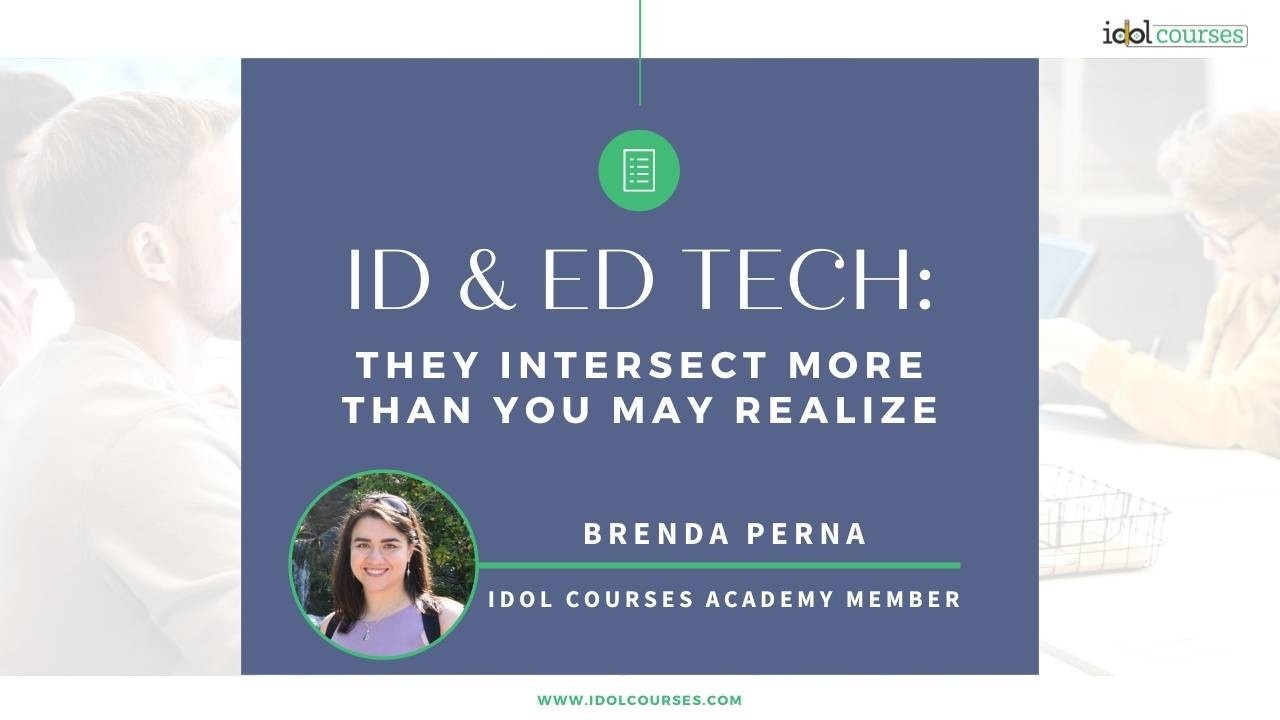ID and Ed Tech: They Intersect More than You May Realize
Jul 14, 2022
Soon I began to think about how I could take that inclination, strength, and interest I had in using technology for learning, and actually specialize in it. That’s how I ended up enrolling in a master’s program in educational technology. I quickly learned what it meant to earn a Master of Science degree – literature reviews and research papers!
What does this have to do with educational technology? Well, instructional practices should be grounded in solid research – in studies that are peer-reviewed, published, and with findings that usually are reinforced through subsequent studies. There is a scientific approach to education research. Through the literature reviews I read and wrote, the research papers that I also read, and the case study I designed and conducted, it became clear to me that ed tech is about utilizing technology in meaningful and purposeful ways to enhance and transform learning.
This is where the connection to instructional design comes into focus. In an article by eLearning Industry, one of the myths described is that “using technology for training can significantly increase learning.” The argument is that eLearning must connect with real-world experiences in order to have meaningful learner engagement. This relates to the point about technology being most effective when it enhances learning. A video can hook the learner initially if it’s played at the beginning of a lesson, but it can transform the lesson if it’s interactive – better yet if there’s a simulation in which the learner can immerse themself. That’s when the learner can start to apply the knowledge or skill being taught to a situation that requires multiple senses and, importantly, action. It also creates an opportunity for the learner to use technology to solve a problem. Problem-centered learning promotes critical thinking and encourages collaboration. Attend any ed tech conference or training, and you'll hear those ideas being championed.
Last year, as I began to pivot to instructional design and eLearning, I contributed to an IDOL courses blog post where I reviewed The Essentials of Instructional Design, a book that one of my professors wrote. Aside from it being guaranteed income for him, why did he require it for an ed tech program? Well, there are a lot of bells and whistles in technology, some of which can actually make learning less effective, depending on how they’re used. It’s important to distinguish well-developed tools and resources from ones that can hinder learning.
As I created professional development resources using tools such as Canva, Screencastify, and VoiceThread, I learned to consider not only things like alignment and consistency, but also cognitive load, closed captioning, and color contrast. (For more on tools and skills that connect ed tech and instructional design, check out Software Skills Needed to Be Successful at Instructional Design and Translating Teacher Tech Skills to ID Tools).
Basically, I realized how crucial accessibility is for any instruction involving technology.
Although I have taught many learners with disabilities over the years, it wasn’t until my master’s program that I learned what accessibility truly means and studied it so that I could consistently put it into practice with my own instructional design. Even still, I’ve sought out IDOL courses Academy and other trainings, such as webinars by Articulate and tutorials by E-Learning Heroes to better understand what’s accessible and what’s not. (Check out Accessibility Basics E-Learning For All for a nice overview of the topic, and for deep dives, subscribe to the Learning Content Accessibility newsletter on LinkedIn.)
For both ed tech and instructional design, accessibility can be the anchor that gets you to critically think about the actual purpose of any technology tool or resource. That way, if you do decide to use that tool or resource, whether in a classroom, training, or eLearning course, you can be sure to integrate it effectively into the learning experience.
Written by: Brenda Perna
Brenda is a learning designer with a passion for making learning accessible and meaningful. She loves to create and innovate while also being very process-driven. Check out her work at brendaperna.com and connect with her on LinkedIn.
Stay connected with news and updates!
Join our mailing list to receive the latest news and updates from our team.
Don't worry, your information will not be shared.
We hate SPAM. We will never sell your information, for any reason.


